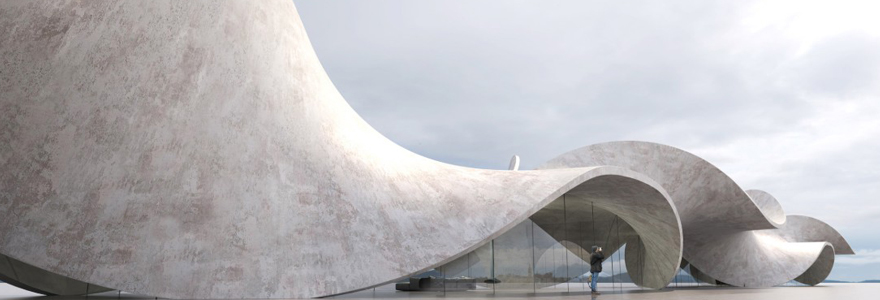
Before you build a luxury house in any location, including building property Mougins, you must determine the type of home you want. When making this decision, one of the things you encounter is different forms of architecture, like modern and contemporary. Modern refers to a specific period in American history. On the other hand, contemporary is an ever-changing trend in various industries. For instance, the ever-changing trends in how houses are designed and constructed in architecture are ever-changing.
What is modern architecture?
Modern, also known as modernist architecture, emerged in the 20th century. Modern home designs were introduced after a lengthy period of highly decorated home designs around the 19th century. The introduction of modernist architecture saw the emergence of home designs without the ornate flare that most people had grown accustomed to. The launch of modern home designs also replaced rigid forms, conventional, and traditional architectural styles with freer and natural expressions. Modernists aimed at allowing people to feel closure and more connected to nature. They intended the outside to complement the exterior environment. Over the years, modernist architecture has evolved into a personal environment. For instance, people have abandoned special hosting spaces for multipurpose spaces. People also no longer go for defined rooms like sitting and dining rooms for living hybrid living and entertaining areas. Modernist homes feature open floor plans, asymmetry designs, and large panel windows and glass walls. It is worth mentioning that the global interpretations of modernist architecture vary. Below are some keen elements of modern architecture;
• This form of architecture revolves around simplicity and sophistication. Therefore, most modern homes lack adornments, whitewashed exteriors,
• Modern homes are characterized by their rectangular forms and elements of asymmetry
• Modern homes are built with their landscape and exterior environment in mind. For instance, the roof lines reflect the surrounding natural lines. The homes also incorporate an appreciation of nature and its compositions. This is why most of them have glass walls or large windows.
• The homes utilize natural light
• This form of architecture applies natural materials like wood, innovative, and eco-friendly materials. The wood and natural materials used to construct the homes create warm colors in modernist homes.
• The modernist architecture features sprawling single-story layouts, integration of interior and exterior spaces
What is contemporary architecture?
Contemporary construction refers to the design, landscaping, and architectural features of the 21st century. It encompasses all the latest innovations, novel trends, and improvements in the construction sector. In simpler terms, contemporary home designs can be referred to as architecture of the current day. This form of architecture is based on the principle of constructing homes that are different from the past. In other words, the soul of this form of architecture is transformation and novelty. Home designers and homeowners are more willing to experiment with new ideas and try out designs and materials that have not been tried before. Contemporary homes promote the application of unconventional and industrial materials in the home and building construction. It is worth mentioning that contemporary building style is not an architectural constraint. It is an overarching ideology concerned with present opinions and values and breaking away from the past. Below are some top elements of contemporary construction;
• The application of natural and organic materials like metal, concrete, wood, stone. Sustainable materials are also quite popular in contemporary homes.
• Contemporary construction distances itself from modern practices by going for cured lines or incorporating curved and straight lines. Curved lines allow constructors to design spaces, not cubes or rectangles, explore round spaces and other designs.
• Contemporary homes also feature larger and more bountiful windows. The windows are also unusually positioned, like skylights, window walls, and panoramic windows.
• The homes feature multiple openings to create spectacular views and take advantage of natural light
• Contemporary construction features bright and open interiors thanks to the multiple openings and large windows.
• The homes incorporate open floor plans to eliminate and minimize interior walls. This element provides for bright, comfortable, aesthetic, and relaxing homes
• Flat overhanging roofs are also key elements in contemporary construction. They provide additional shade and protect the homes from exterior elements. They also provide an aesthetic appeal.
• Contemporary construction also features geometric simplicity, animated design, and various environmental considerations. Eco-housing is a significant element in contemporary construction.
What is the difference?
Modern and contemporary forms of architecture are often compared or used interchangeably. Rightfully so, since contemporary designs borrow many elements from modern designs. For instance, both take advantage of external environments. Modern homes feature large windows to create harmony with the external environment. On the other hand, contemporary homes also feature multiple openings and large windows for the same purpose. Both designs also feature eco-friendly elements. However, there are clear differences between modern and contemporary architectural forms. For instance, modern homes are more restricted than contemporary ones. Contemporary construction does not follow particular design elements. It is all about experimentation and trying out new things. Also, unlike modern construction, contemporary construction is not rooted in any period. Modern homes also emphasize natural materials. On the other hand, contemporary homes apply mixed materials. Additionally, modern styles were introduced as a rejection of previous construction styles. On the other hand, contemporary styles are formed depending on what is new and people’s creativity. Most potential homeowners struggle to pick the best option. However, between the two architectural styles, none is superior. They both feature incredible elements. However, understanding the differences will help you make the right decision.
Why do the differences matter?
When buying or building a home, it would be wise to understand the differences between the two forms of architecture. This way, you can use accurate language when describing what you want to a contractor or an agent. Using the two terms interchangeably can affect the outcome of the construction process. For this reason, the content above is essential for any potential homeowner, buyer, or builder.